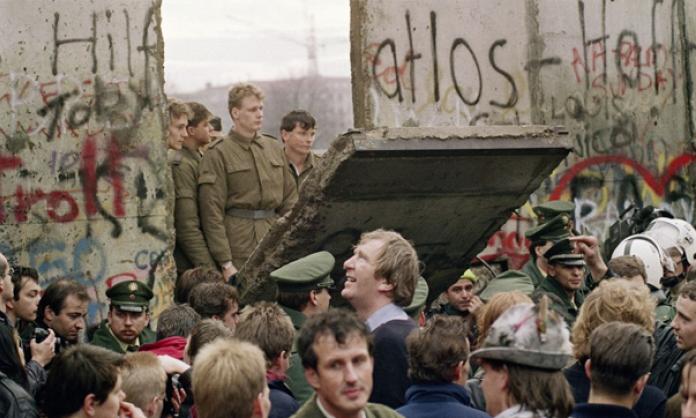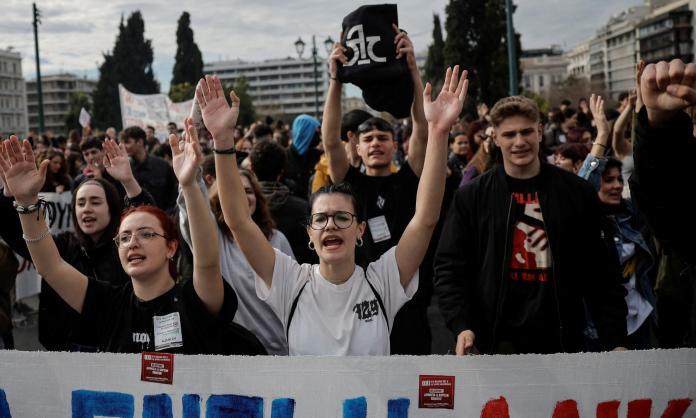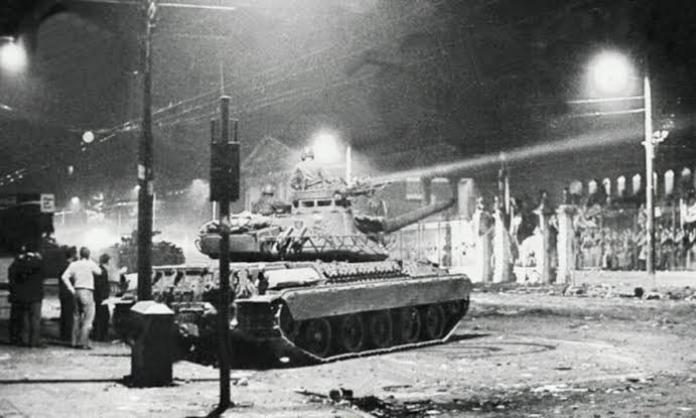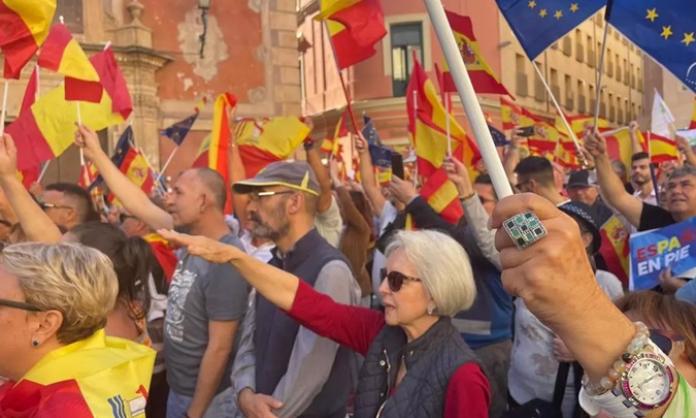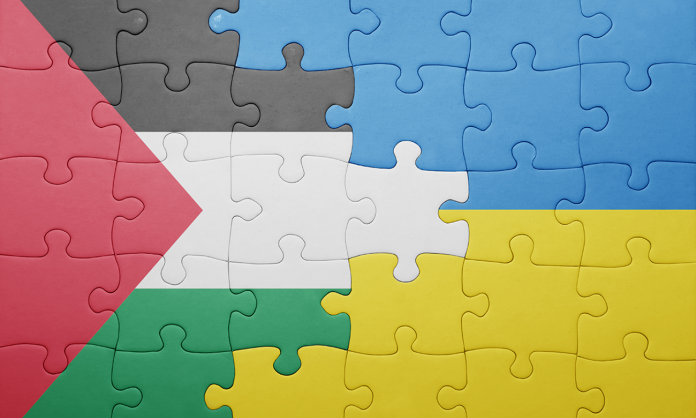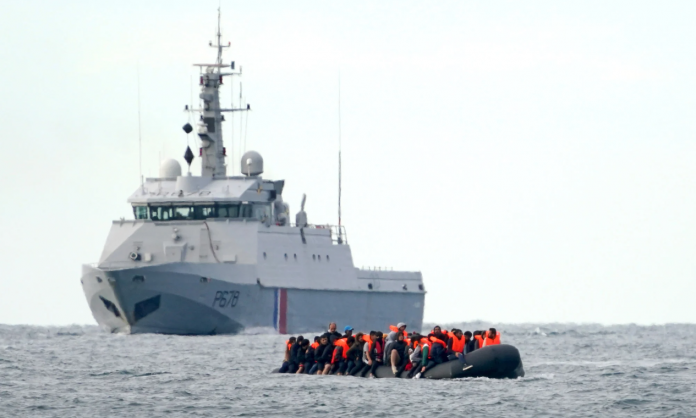I was born in East Berlin and lived there during the fall of the wall. East Germany – the German Democratic Republic – claimed to be socialist. The constitution said that it was a workers’ and peasants’ state. Yet there had never been a revolution; “socialism” was introduced from above in 1949.
At the end of the Second World War, there had been a movement of workers that created council-like structures called anti-fascist committees. After the collapse of the Nazi regime, they took the factories into their hands. But the first step of the Stalinists – a small group around Walter Ulbricht, who later became the first head of the state and the party – was to crush the self-organisation of workers. They then took over the Communist Party by purging it. This was the beginning of so-called socialism in East Germany.
The power of the Stalinist regime rested on two pillars. First was the state. The party built a huge repressive apparatus of police, military and secret police (the Stasi). By the end, there were 200,000 Stasi for 16 million citizens: one officer for every 80 citizens. In Russia, it was about one for every 300.
The second pillar of Stalinist rule was more important: the support of the Soviet army. This became clear in 1953, when there was a workers’ uprising. The movement was so strong that the authorities couldn’t rein it in. It took Russian intervention to put down the movement. After that, many workers left for the West, where living standards were higher and the oppression less intense. The continuing exodus of labourers led the government to build the Berlin Wall in 1961.
The bureaucracy controlled the economy, and factories, by law, were “people’s property”. But because workers didn’t control the state, they didn’t control the economy. This was very clear in 1989 – East German sociologists asked workers if they felt represented in the factory and in society. About 80 percent said no. They had little interest in preserving “people’s property” because it was not their property. It was not their state. It was a state against them.
The beginning of the revolution was marked by two features. First was a civil rights movement, which had its social basis in the middle classes – doctors, pastors, artists and so on. This movement started after 1986 and organised in churches and private apartments – the only places activists could meet. It was a response to the situation in the Soviet Union. Mikhail Gorbachev had come to power and started a program of perestroika and glasnost. Perestroika meant the introduction of market economy, and glasnost meant democratisation. The latter produced hopes for democratic change in East Germany.
Second was developments in the working class. In May 1989, the Hungarian government opened the border to Austria. Many East German workers took summer holidays in Hungary because it was cheap, and it was possible to go there without a visa. Above all, they wanted to wait for a good moment to cross the border. A refugee movement with a working class character developed.
These two movements came together in a series of Monday demonstrations. The civil rights movement every Monday had a peace prayer in the churches followed by a demonstration. These attracted workers, and the movement grew rapidly. In the beginning of September, there were several thousand protesters. Within a month, there were 20,000 on the street in Leipzig. A few days later in Plauen, a city with only 200,000 inhabitants, there were 20,000 on the street.
The turning point was 9 October in Leipzig. In previous weeks, the regime repeatedly commended the Chinese government for its June crackdown on protesters in Tiananmen Square. The head of state had visited China to congratulate the Chinese government and, while there, invited representatives to come to East Germany.
In Leipzig, the government mobilised the army, the police and even militias. The leader of the militias announced that they would use weapons to crush the demonstration. But the demonstration went ahead. Seventy thousand people attended, and the regime didn’t intervene. This was a very important moment. The movement continued to grow: 200,000 people were on the street the following week.
Why did the regime not choose the “Chinese solution” and crush the movement? There are two reasons. First was Gorbachev saying that the Soviet Union would no longer help governments in the Eastern Bloc. So it was clear that the Russian tanks – as in 1953 or in 1956 in Hungary – would not come. Further, Ministry of the Interior records indicate that the government feared a general strike because the movement was mobilising factory workers. The trauma of the 1953 uprising remained.
The government made a tactical retreat and called for cooperation with the moderates in the civil rights movement. Erich Honecker, who had succeeded Walter Ulbricht as party leader, was removed from his post. The middle class leadership of the civil rights groups wanted to compromise to preserve the German Democratic Republic. But workers in the streets demanded the crushing of the Stasi and the crushing of the state. On 9 November, the Berlin Wall was besieged after the government announced an opening of the borders between East and West Germany. Over the next days and weeks, it was demolished. But the story did not end there.
In the beginning of December, the working class became more and more self-conscious and continued to mobilise. The basic demand – the dissolution of the security police – was not met. The basic demand for the end of the ruling party was not met. There were mass occupations of the local headquarters of the secret police in the south and the east. Often, they were crushed. But the workers continued to mobilise. There were cases in which police officers shot them down out of fear of the workers’ rage. And this rage was channelled in the factories.
Workers had occupied local organisations of the moderate civil rights groups. They went into the groups and local branches and called a general strike for 6 December. The moderates opposed the call, and were supported by the mass media, which said it would harm the economy. All politicians, even the opposition politicians and the social democrats, said it would hurt everyone. But strikes took place. Not a general strike, but in certain cities in the south. There was the beginning of a strike wave in the factories, and this forced the government to make an even bigger retreat.
It convened a round table with the civil rights groups. The opposition leaders said that the round table was a way to control the government, but it was just a stalling tactic by both the Stalinists and the moderate reformers. They talked and talked and talked, but there was no dissolution of the Stasi. They feared a radicalised movement, which was already demanding the crushing of the state and reunification with West Germany.
Having lasted through Christmas and New Year, the regime went on the offensive, calling for counter-protests against the opposition in the name of anti-fascism. “Anti-fascism” was often used by the Stalinist regime against the workers. Even the Berlin Wall was called an anti-fascist barrier. Every instance of self-activity of workers was denounced as fascist. But workers and the radical movement recognised this manoeuvre and started a counter-manoeuvre in the middle of January, with a big occupation of the central headquarters of the secret police in Berlin.
This was the end for the regime. In the southern region of East Germany, the Stasi was already destroyed. But in Berlin, the national headquarters was still operational. The moderates were under pressure to support the action and finally did so, but the majority involved were workers spontaneously organising. During the occupation, the moderate leaders of the civil rights movement again tried to dampen things and warned against violence and disorder. But the movement ignored them, occupying and destroying the headquarters.
Once again, after this event, there was a mood for a general strike. Once again, in several cities there was rioting; strikes thrived. The regime then formed government with the opposition group and with the moderates from the civil rights campaign. The new government chose the path of reunification because, for them, it was a better option than facing a general strike and being crushed by the workers’ movement.
It’s very important to understand that the events were driven by the workers’ movement. We had a small revolutionary left, but they had the position that East Germany was a better state than the West German state, and they didn’t take up the demands of the workers. So the workers’ movement had no left that could direct it in the correct direction. By the end, the only party that supported reunification was the West German conservative party. Even West German social democracy didn’t support reunification because they said it was too expensive.
The conservatives took the moment and ownership of reunification. History suggests other possibilities. For example, had we had a general strike, we might have obtained reunification on better terms for the working class. But the big problem was that a direct transition from the Stalinist regime to socialism was not possible at that point because the differences in living standards between East and West were so big that workers were united on reunification being the priority, and had lived for decades under a “socialism” that discredited it. We have now a better situation, but that is for the fight ahead.




